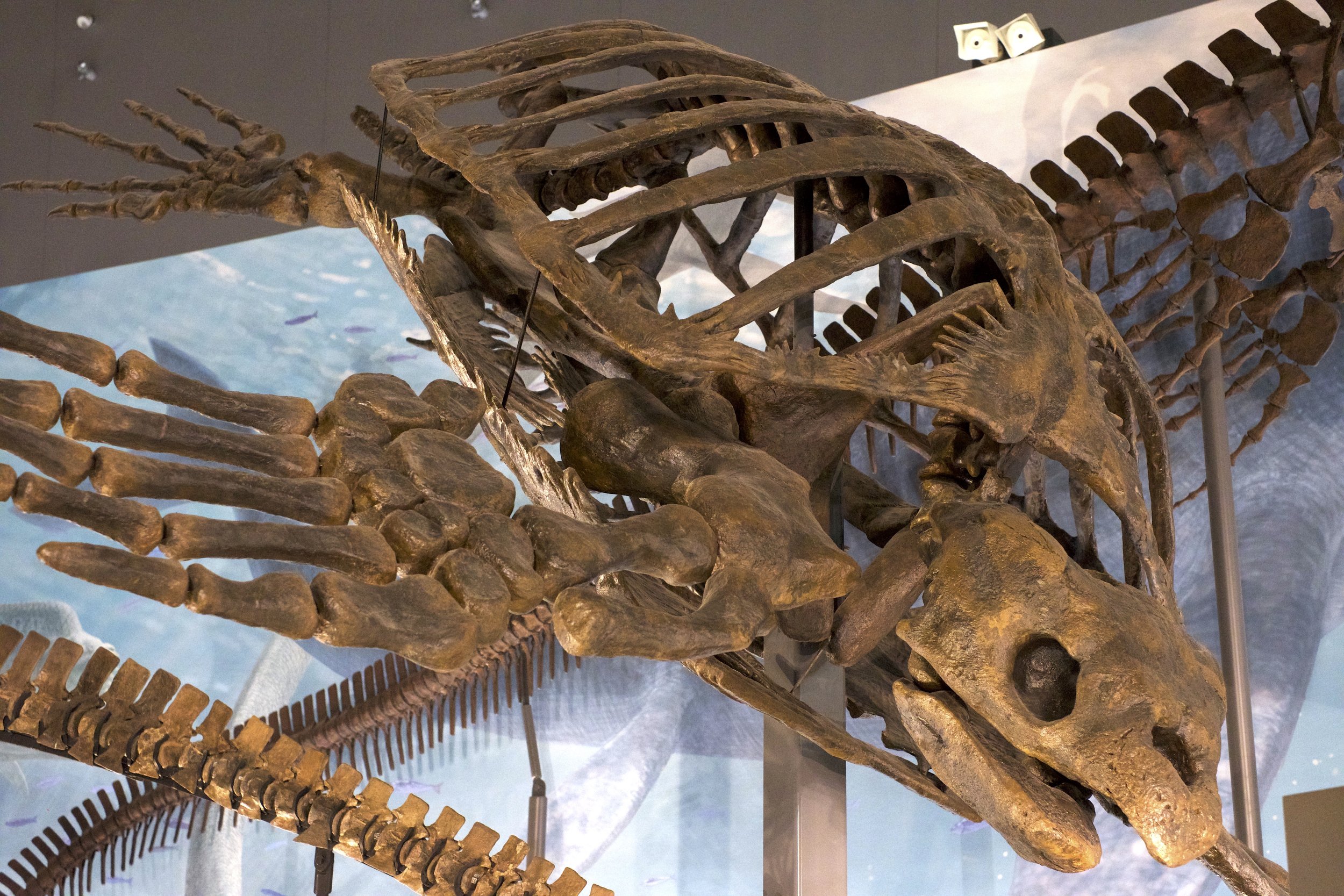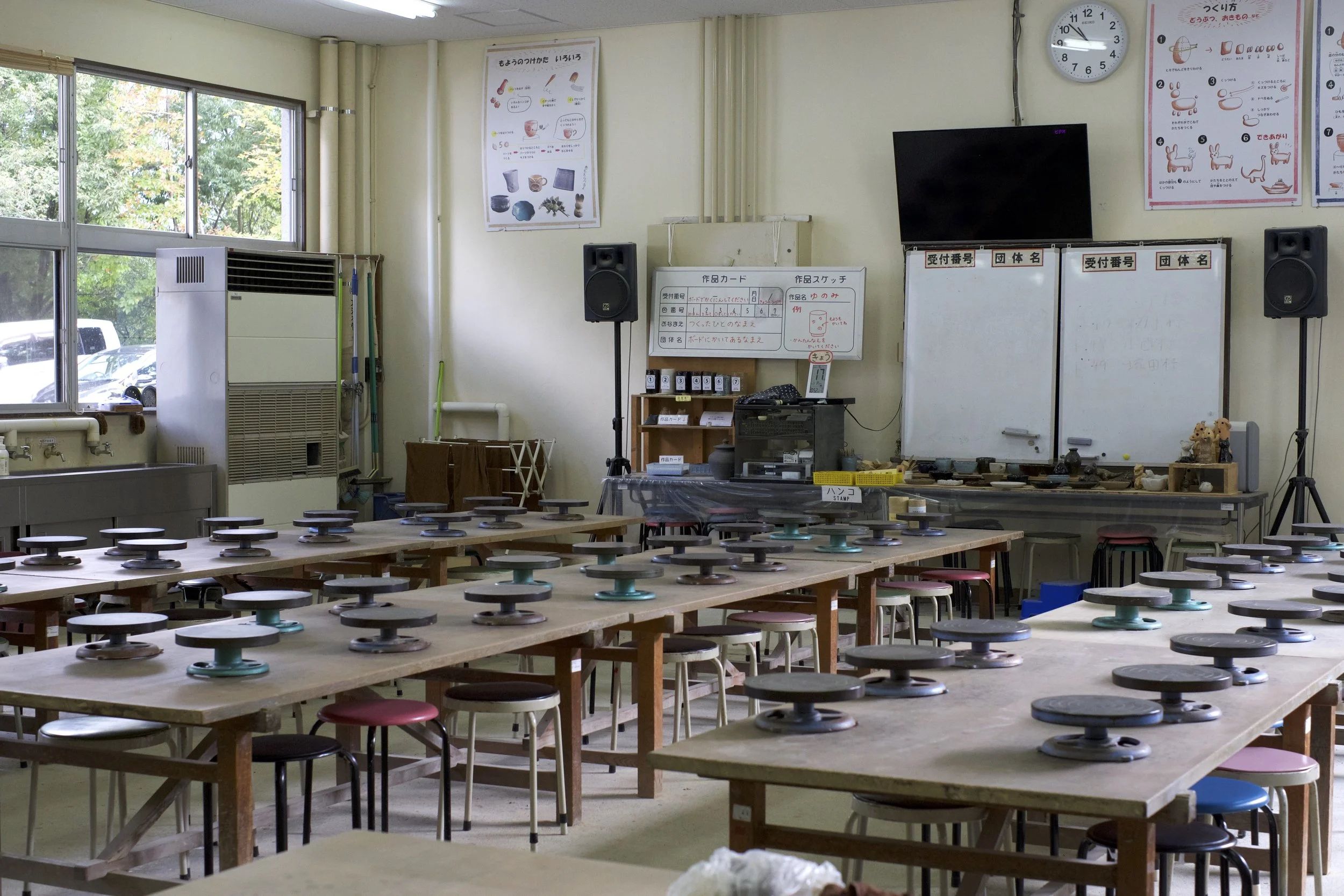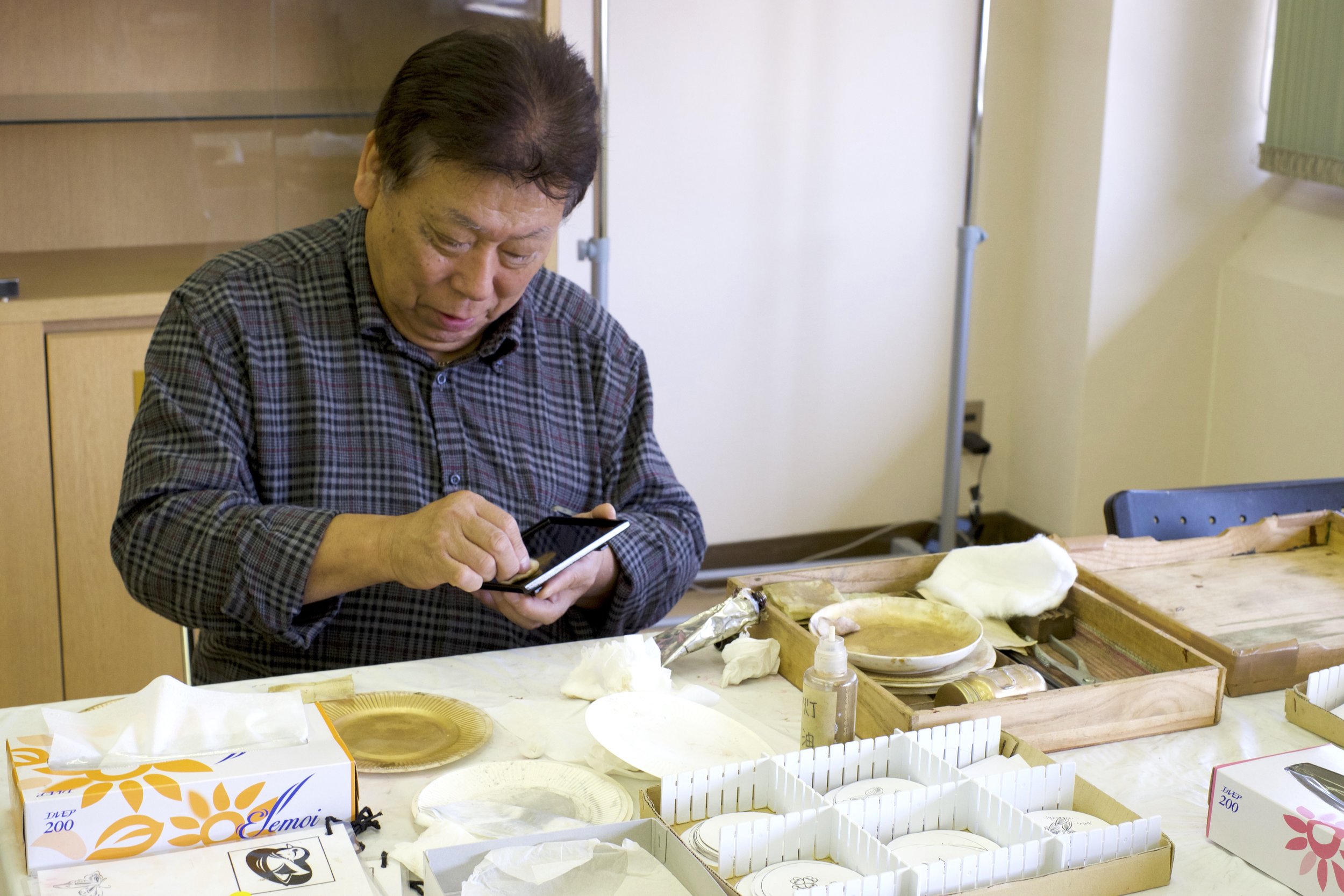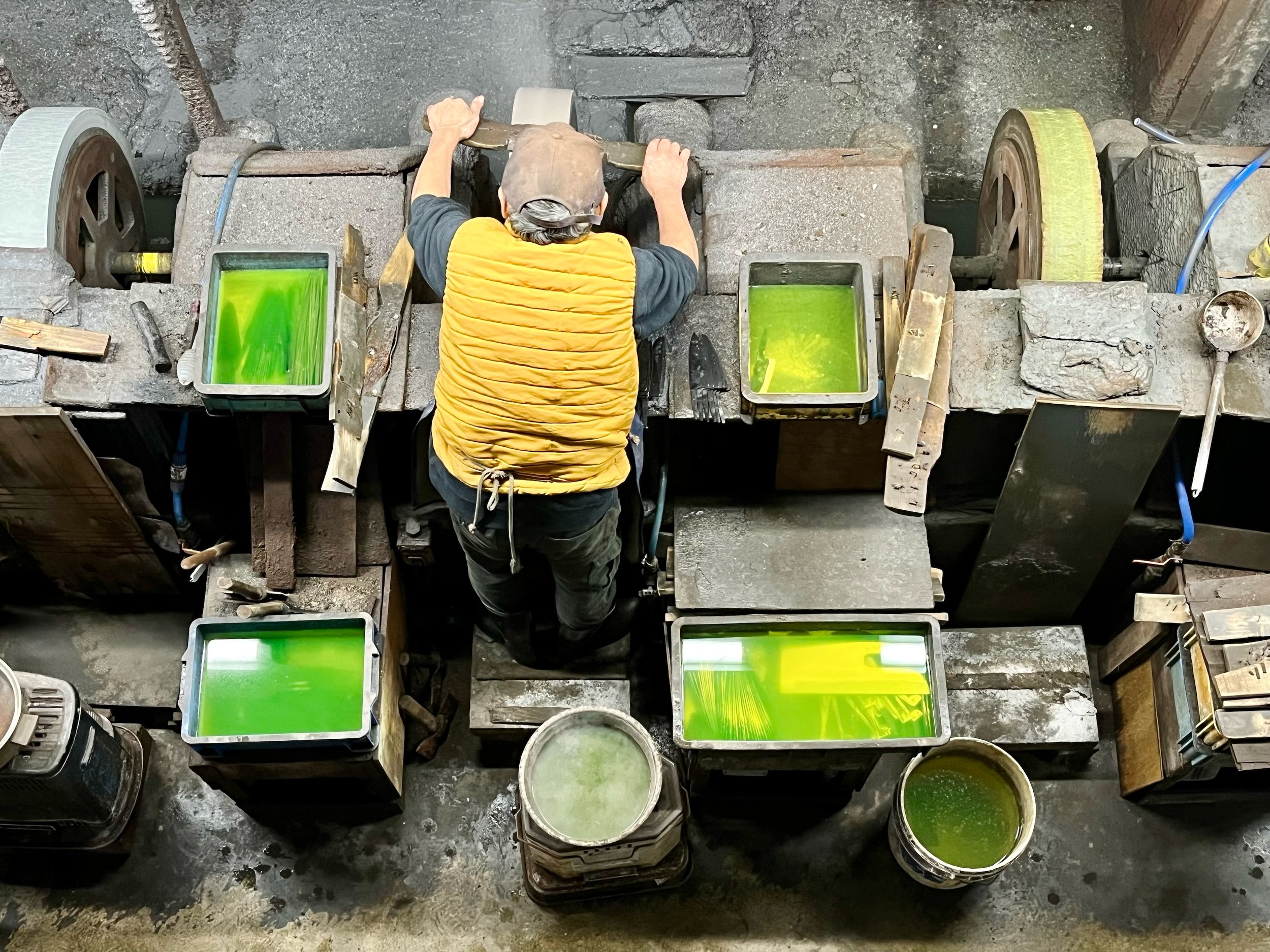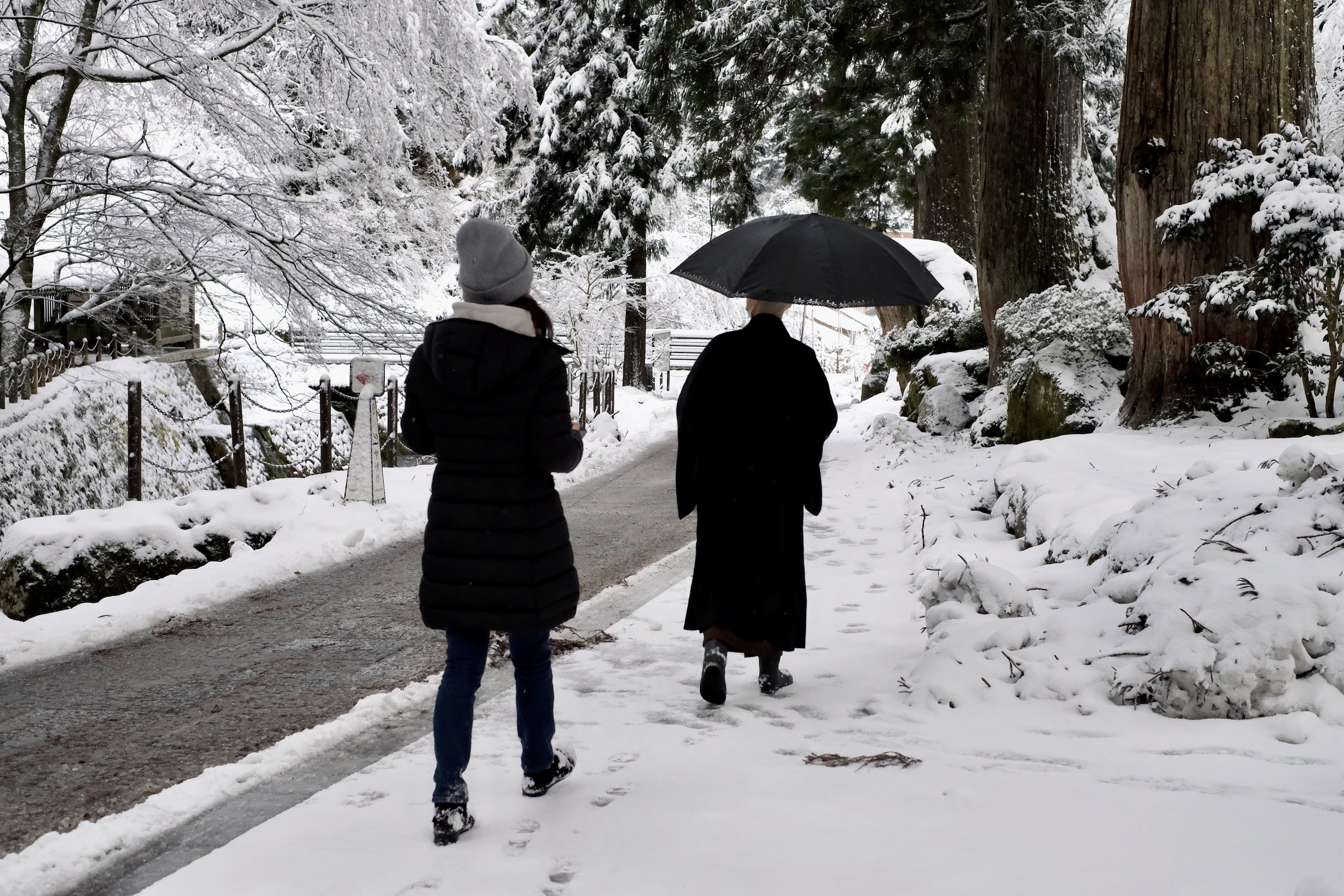Serene Shrines and Sauruses
As a tourist destination for inbound visitors, Fukui Prefecture often gets short shrift, especially compared with more glamorous neighbors such as Kyoto and Ishikawa Prefectures. But this may start to change when the Hokuriku Shinkansen adds Fukui, Tsuruga, Awara Onsen, and Echizen Takefu Stations to its pit stops in March 2024.
Fukui Prefecture offers crafts, fossils, relaxation, and so much more.
Presented in partnership with Fukui Prefecture
Photos by Florentyna Leow
As a tourist destination for inbound visitors, Fukui Prefecture often gets short shrift, especially compared with more glamorous neighbors such as Kyoto and Ishikawa Prefectures. But this may start to change when the Hokuriku Shinkansen finally adds Fukui, Tsuruga, Awara Onsen, and Echizen Takefu Stations to its pit stops in March 2024.
For now, Fukui’s sightseeing spots remain relatively quiet and uncrowded, making it an ideal road-trip destination for those with a little more time to spare. Our visit this fall takes us around the cities of Katsuyama, Awara Onsen, and Echizen—all of which yield rich rewards for the visitor willing to rent a car and take the wheel.
Mossy Matters
Gently sloping and meandering, the stone path to the main building of Heisenji Hakusan Shrine is flanked by towering cedars. It is serene, save for birdsong; few visitors are here on a weekday morning. The mid-morning sunlight filtering through the canopy casts dappled patterns of light and shadow on the velvety green moss blanketing the ground, yesterday’s rain heightening the dewy verdure. It’s so absurdly beautiful that I almost want to curl up on the moss and never leave.
However, if you ask historian and resident head priest Hiraizumi Takafusa, the gorgeous mosses on the shrine precincts aren’t the be-all and end-all of these grounds. “It’s not like we promote this place with its moss. We supposedly have over 200 types of moss,” he says. “I can recognize only 20 of the varieties.” According to Hiraizumi, the history of the shrine and the surrounding area are the true highlights.
Located on the edges of Hakusan National Park in what is now Katsuyama City, Heisenji Hakusan Shrine was established as a Buddhist temple in 717 by a monk named Taicho. For centuries, it operated as both Shinto shrine and Buddhist temple—as was common practice prior to the Meiji Restoration—and served as a base for pilgrims making their long, arduous way on foot to the sacred mountain of Hakusan.
At its peak, thousands of monks lived on the precincts, which were about 10 times the size of the present-day sprawling shrine complex. It’s mind-boggling to consider. It will surprise no one familiar with Japanese temple architecture that the complex burned down in the 16th century and was subsequently rebuilt.
The formal separation of Shintoism and Buddhism in the 1870s meant that it became a Shinto shrine first and foremost. However, its name points to vestiges of its Buddhist ties from centuries past—it is a rare instance of a Shinto shrine whose name ends in -ji, meaning “temple.”
The shrine has much to offer history buffs, especially when paired with a visit to the more famous Eiheiji Temple, about 40 minutes away by car. But even without a deep interest in Japanese history, the beauty of this shrine complex alone is mesmerizing enough to warrant an hour or two spent strolling around the grounds. I could happily spend that long peering at feathery mosses, watching long-legged spiders and beetles navigate the moss-furred stumps and stone steps.
The shrine is best visited in spring, fall, or rainy season. Winter is beautiful, too, but perhaps impractical for a visit given the snowy conditions.
Coming of the Raptors
Ask the average Japanese person what Fukui is famous for, and there’s a high chance they’ll say dinosaurs. You could point to any number of reasons for this. For example, many of the dinosaur fossils discovered in Japan were found here. Six new species were identified in (and named after) Fukui: Fukuisaurus tetoriensis, Koshisaurus katsuyama, Fukuiraptor kitadaniensis, Fukuititan nipponensis, Fukuivenator paradoxus, and Tyrannomimus fukuiensis. And, Katsuyama City is home to the world-class Fukui Prefectural Dinosaur Museum (FPDM), which is also an institution dedicated to ongoing dinosaur research and education.
But really, the main reason everyone associates Fukui with dinosaurs is that the area leans hard into being the self-styled Dinosaur Capital of Japan. Dinosaur motifs are everywhere in Fukui: themed restaurants, hotel rooms, playgrounds, stationery, hand towels, and even regular road signs. You’ll find huge dinosaur animatronics outside Fukui Station (they sport Santa hats in winter) and Dr. Raptor on a bench inside. One of the prefectural mascots is a green dinosaur, Rapt-kun, named after the fukuiraptor. I should stress that all this is mostly delightful, rather than gimmicky.
Unsurprisingly, the FPDM is beloved by locals and out-of-prefecture visitors alike. It’s so popular that you’ll see a flashing sign board en route to the museum asking whether you’ve reserved your tickets, which tend to sell fast during summer vacation and major public holidays. The museum even fills up some weekdays.
In truth, I’ve never been interested in dinosaurs, but the FPDM does an excellent job of conveying just how cool these ancient animals are. The main hall is an impressive start to the museum. In a domed exhibition space crammed with dioramas, fossils, and full-body dinosaur skeletons—10 of the 50 specimens on display are actual fossils—I spent a fair amount of time staring at the all-too-realistic T-Rex animatronic glaring ferociously at all of us. If this is what our prehistoric ancestors had to contend with, I am happy to be living in modern times.
As befits one of the world’s leading dinosaur museums, the FPDM has clearly invested in competent translators: the English-language captions are well done, if a tad dry. Plus, it’s fascinating to see how giant raptors evolved into tiny birds over millions of years. It’s well worth spending a few hours here, even more so if you have kids in tow. A shopping spree at the museum’s 100-percent dinosaur-themed gift shop is optional but thoroughly encouraged.
A Bath of One’s Own
Located in what feels like the middle of nowhere (although just a short drive from the Tojinbo Cliffs), Awara Onsen is one of Fukui’s only hot spring towns of note, famous for its healing waters and local cuisine.
We spent the night at the historic ryokan Haiya, whose name translates to House of Ash, a tribute to the craftspeople who produced fine ash used in dyeing clothes worn by Kabuki and Noh theatre actors. The unintentionally amusing name notwithstanding—Uncle Roger would have a field day—Haiya is a ryokan I’d spend several nights in every month if I had the time and money.
Built in 1884, the inn sprawls over three buildings with a total of 43 rooms. The property retains its Meiji-era architectural trappings—along with modern updates like Wi-Fi and coffee machines—and is large enough that a map might almost come in handy for finding one’s way in the maze of winding corridors. All rooms in the original 1884 Shofuan Annex and the recently renovated Kangetsutei Suites, and most of the rooms in the Jurakutou Building, have traditional Japanese garden views.
According to the inn, the room assigned to me—Korin (光輪), meaning “halo” or “nimbus”—was named by Prince Takamatsu. I have no way of verifying this, but the name certainly suits the space with its high ceilings, intricate latticework on the sliding doors, tasteful tableware, 16 tatami mats of space (for up to six people), a private moss-covered garden, and outdoor cypress bath. Best of all, I have it all to myself. Perfect for pretending to be a wealthy writer on sabbatical.
Food and baths are the real draw at most ryokan, and Haiya is no exception. The kaiseki dinner was a leisurely, two-hour affair, a parade of little dishes showcasing freshly caught seafood from the Sea of Japan and produce from the nearby Sakai Plains.
Two highlights from dinner: One, a whole live abalone cooked jigokuyaki-style, or “hell-grilled,” right in front of you until it stops moving. Bouncy yet tender and ocean-fresh, this style of abalone is not for the squeamish. The other, okami’s sake purin, a creamy pot of custard made ever more beguiling with its undertones of boozy umami. To our dismay, this is not a year-round staple, but a seasonal dessert. The idiom “ichigo ichie,” or “for this time only,” has never felt so salient and cruel. (More reason to plan a return trip next October.)
But it’s Korin’s cypress bath I keep coming back to in my mind. Before I checked out, there was a moment where a shaft of sunlight pierced the gap in the bamboo screens in front of the bath just so, illuminating wisps of steam curling up from the surface of the hot water. There was something simple yet transcendent about all these elements coming together for a few minutes before the sun moved on.
The Pleasures of Pottery
In addition to crafts like making washi paper and knives, Fukui is also known for its pottery: Echizen-yaki, or Echizen ware. Notable for its understated coloring, and usually being fired sans enamel, this type of pottery centers on one of the Six Ancient Kilns of Japan, the others being Seto, Tamba, Bizen, Tokoname, and Shigaraki.
Echizen ware is, in fact, a recent term. According to the permanent display at the Echizen Old Kiln Museum, it was coined by the researcher Kuemon Mizuno and Fujio Koyama between 1942 and 1945 as a way to group a number of disparate pottery styles local to the region under a single categorical umbrella. Perhaps unintentionally, this seems to parallel the municipal mergers of the Meiji Era, where many villages and hamlets were amalgamated into new or existing cities.
Both the Old Kiln Museum and the Fukui Prefectural Museum of Ceramics (FPMC) next door have much to offer the ceramics lover by way of exhibitions and beautifully made pieces to add to one’s suitcase. There’s also a traditional teahouse and garden where you can sip on green tea from Echizen ware. But there’s nothing quite like getting your hands dirty to appreciate, on a visceral level, the craft that goes into a piece of pottery.
My visit to the FPMC included a workshop using the electric potter’s wheel. The task was to shape a vessel—anything I wanted, as long as it had a mouth. I had 30–90 minutes. As seems to be true of all craftspeople, ceramicists make their craft look easy when it is anything but. It’s more challenging than it looks to maneuver a solid, spinning hunk of clay. Too little pressure and nothing happens; too much pressure and all hell breaks loose. (Here’s a life lesson: never wear a nice white shirt when taking a ceramics workshop.)
Fortunately, there was a skilled staff member on hand to guide my hands and help fashion the clay into something vaguely presentable. Unless you’re a quick learner, it’s not possible to master the electric potter’s wheel in a single session. It takes practice and more than a little intuition. More saliently, using the wheel is hell on your lower back.
If your work primarily involves a computer, as mine does, it’s easy to forget the pleasures of creating something with your hands, no matter how messy or clumsy the result. Taking a ceramics workshop at a place like the FPMC is a great way to reconnect with the physical world. Reservations here are mandatory, particularly if you’d prefer instruction in English (there are only two English-speaking members on staff). For those living in Japan, they’ll fire and mail the finished piece to you for an additional fee.
Lustrous Lacquer
The Echizen Lacquerware Hall is not somewhere you’d chance upon unless you were looking for it. Located in Sabae City—these days more famous for spectacles than anything else—this unassuming building is all too easy to drive past. Of course, this would be a waste, since it’s a fine place to view superb examples of lacquerware, watch artisans make lacquer magic, shop for lacquerware, and even try out various types of lacquer art for yourself, from applying lacquer to plain wood or painting already-lacquered wood.
This was the final stop on our two-day tour; we were there for the chinkin experience. Briefly put, this involves carving a design onto a lacquered surface, applying a thin layer of lacquer into the engraved lines, then covering it with gold dust or leaf. You then take your finished work home. How difficult could this be?
As the saying goes, these were famous last words. After tracing a motif of your choice onto a lacquered surface—I foolishly chose a detailed crane drawing—you then use a spindly metal chisel to gouge out the lines you’ve drawn, scraping away from yourself in a single direction. Engraving is not at all like drawing; my lines were nowhere as precise as I wanted them to be. Those with fine motor skills will have a better time of it.
I had never thought much of lacquer as a craft, but I gained a newfound respect for lacquer artisans that day. Having tasted a little of what it’s like to carve a design, the exquisite details on the lacquerware on display at museums and exhibitions have taken on more weight and meaning. These days, my clumsily carved crane plate sits on my dining table, reminding me not to take for granted the craft behind beautiful handmade things.
Learn more and plan your visit …
Heisenji Hakusan Shrine
Fukui Prefectural Dinosaur Museum
Haiya
Fukui Prefectural Museum of Ceramics (Japanese only)
Echizen Lacquerware Hall
Fantastical Fukui
There are many reasons to visit Fukui, a small tadpole-shaped prefecture facing the Sea of Japan. It’s home to a bevy of traditional crafts, magnificent temples, rugged landscapes, and some of Japan’s best freshly caught winter crab and sweet shrimp. All this begs the question: Why isn’t Fukui more well-known? We take you on a visit.
Nestled near the Sea of Japan, Fukui Prefecture is rich in cultural experiences
Presented in partnership with Fukui Prefecture
Photos by Florentyna Leow
An artisan at work in the Takefu Knife Village
There are many reasons to visit Fukui, a small tadpole-shaped prefecture facing the Sea of Japan. It’s home to a bevy of traditional crafts, including washi papermaking and knife forging, a world-class dinosaur museum (complete with life-sized raptor animatronics), magnificent temples, rugged landscapes, and some of Japan’s best freshly caught winter crab and sweet shrimp. Situated between tourist favorites Kanazawa and Kyoto, it’s an obvious pitstop when visiting both cities.
All this begs the question: Why isn’t Fukui more well-known?
Call it a serious case of middle-child syndrome. Although Fukui has all the ingredients for a fun weekend getaway, it’s often overlooked in favor of its glamorous neighbors. But this makes it ideal if you’re looking for travel minus the crowds. When planned right, a visit to this ferociously underrated prefecture offers an eye-opening look into Japanese craft, cuisine, and culture.
Paper Matters
Paper rarely merits a second glance in our daily lives. Money, flyers, utility bills—paper is just there in the background. But a sheet of washi is a different story. From uchiwa (summer fans) to wagashi wrapping, handmade paper has a warmth and elegance unmatched by most machine-made papers.
If Fukui has a signature craft, it’s Echizen washi paper. There are many varieties, all beautifully textured and supple, delicate yet durable. With its 1,500-year history of washi production, Echizen City is one of Japan’s top washi producers in terms of quality, quantity, and variety—more than earning its nickname "washi no sato," or the home of Japanese paper.
Faced with a decline in demand for washi—in large part due to fewer people using partitions and screen doors—papermakers have had to get creative with new paper products for contemporary consumers. These days, you can find washi earrings, bags, and even socks and jackets. The lampshades by Osada Washi, a family-run washi company in the Imadate district of Echizen City, are especially modern and striking. The intricate floral patterns are all drawn freehand with paper pulp and wrapped around acrylic stands as tall as totem poles.
But to appreciate washi, there’s no substitute for making a sheet of paper by yourself. I visited Ryozo Paper Mill, another family-run business in the Imadate district, to experience the production process.
It was early winter, and the snow was starting to pile up. Winter is the best season for papermaking, I was told, because the raw material in the pulp doesn’t spoil as quickly in the cold. I quickly realized two things: handling paper pulp feels like plunging your hands into a vat of ice-cold egg white; and papermaking is bloody hard work. Made the traditional way, tesuki washi (handmade paper) involves quickly dipping a large wooden frame fitted with a bamboo screen into a tub of paper pulp, then swishing liquid pulp back and forth until the screen is evenly coated. The frame is heavy enough that I almost dropped it the first time.
With no small amount of assistance from Kyoko Yanase, one of Ryozo Paper Mill’s main craftspeople, I finally managed to get even coverage on the screen. She set the frame on the ground and placed a large spiral-patterned metal mold on top—like a stencil, but in reverse. Following instructions, I flicked a showerhead up and down while moving it across and above, the spray of water droplets creating thousands of tiny holes in the paper. When she lifted the mold, before us lay a large sheet of perforated washi embossed with spirals. Dried, the paper resembled embroidered lace.
I had made a sheet of rakusui-shi, or “water-dropping paper,” an uncommon variety of washi made by very few craftspeople in Japan. It was gorgeous. I couldn’t believe how much fun I’d had making it. Suddenly, every sheet of washi I’d seen in Fukui made sense, each the result of skill and technique honed over a lifetime.
Sharp as a Knife
If paper is best made in the cold, the fiery process of knife-making feels like its thermal opposite. Working near the charcoal-powered forge, with its constant heat, can make your time in a knife workshop warm, toasty, and downright sweaty—from the physical labor involved in making knives, that is.
Once known as Takefu, Echizen’s history of knife-making stretches back 700 years, beginning with sickles and fighting swords to bonsai tools and chef’s knives. Today, Japanese chef’s knives are loved worldwide for their quality, sharpness, and durability. One small facility in particular attracts a steady stream of knife enthusiasts from all over the world looking to add to their collection and learn more about the traditions and techniques behind Echizen’s hand-forged knives.
Started as a cooperative between a dozen local independent knife manufacturers, Takefu Knife Village is something of a curiosity. The facility was built in 1993 but, looking at these incongruously sleek buildings in the middle of rural Fukui, you’d be forgiven for thinking it new and under-promoted. The 20-minute drive there from JR Takefu Station is poorly signposted for what’s meant to attract tourists. It’s the kind of place where “if you know, you know.”
At Takefu Knife Village, you can shop for knives, but also learn about local knife-making history, take a workshop, and watch the artisans at work from an observation deck. Because it’s a cooperative by name and in practice, the craftspeople from all the different knife companies share equipment and make their products in the same space. There’s no secretive squirrelling-away of technique and know-how; it’s an unusually democratic operation compared to many other industries.
Speaking of workshops: If you have six hours, you can learn the basics of making a knife from one of the craftspeople in the dedicated backyard building, experiencing almost every step of the process from hammering to forging to attaching the handle. If you don’t, an hour or two can give you the skills required to sharpen chef’s knives at home like a pro.
I didn’t have six hours, or even an hour, so I compromised by trying out a treadle hammer to flatten vaguely blade-shaped bits of steel. Most knifemakers work on a single blade at a time. Here, they stack two blades together and hammer them simultaneously, in what is a technique supposedly unique to the Echizen region. I appreciated the efficiency of getting to screw up two blades at the same time.
Using a treadle hammer, if you have never tried it, is an awesome and challenging feat of hand-foot-eye coordination plus some physical strength (neither of which I possess). You heat two steel molds in fire until they’re bright red, remove them with tongs, and set them under the hammer. With your right foot, you gently press a pedal to activate the murderous pulverizing hammer while simultaneously moving the blades counterclockwise, making sure the hammer pounds the surface evenly while the steel is still hot and malleable. Lose your grip and your blades will come out weird. Move too slowly and the cooled steel will simply break. The phrase “strike while the iron is hot” suddenly made complete sense.
It was one of the coolest things I’d ever done in my life. I would also never have visited this place without a car. As with most places in rural Japan, the lack of public transportation infrastructure is probably Fukui’s largest barrier to becoming a more tourist-friendly destination. Officially named “Geisha de GO,” the “one-coin taxi” service offered by Echizen City is an ingenious stopgap solution. Buy taxi tickets (each worth ¥500) at the tourist information center near JR Takefu Station, hop into a taxi (or ring one up), point at one place on a list of major tourist destinations in the area (including the paper mills and Takefu Knife Village), and they’ll drive you there.
Disappearing Art
Fortunately, not every place of interest requires a taxi ride, especially if you only have time for a quick wander around one stop in the prefecture. For example, Oyanagi Tansu, the fourth-generation maker of tansu (Japanese storage chests or cabinets), is a mere 15-minute walk from JR Takefu Station.
A workshop tour here offers incredible insight into the disappearing art of tansu-making, which requires a mastery of three separate crafts: sashimono (wood joinery), lacquering, and metalwork. A dwindling number of craftspeople specializing in each of these tasks means that Oyanagi now handles the entire process from start to finish. Completing a single tansu can take anywhere from six months to a year. I’ve never been so dazzled by cabinets, and have to hastily leave before I shell out several hundred thousand yen for a karakuri tansu full of hidden trick mechanisms and secret drawers—perfect for hiding my stack of diaries. If home ownership ever becomes a reality for me, this is where I’d order my storage chests.
Even nearer Takefu Station—seven minutes on foot—is Urushiya, a buckwheat noodle restaurant set in a traditional wooden house. Its claim to fame is having once served Echizen oroshi soba (soba with grated radish) to the Showa emperor. We ate our way through plates of pressed sushi, tempura, and an array of bite-sized appetizers. The noodles alone were worth the wait.
If you’re alighting at JR Fukui Station, you could take a 10-minute bus ride to Komego Miso for a fun afternoon diversion. Take a guided tour of the factory (they’ve been making miso for 190 years, which the staff mentioned almost as an afterthought), join a flavored miso ball-making workshop (which you then use to make instant miso soup in a mug), buy miso by weight, or have lunch at second-floor cafe misola, where everything from beer and ice cream to soup is spiked with miso.
Maybe you’re only in Fukui for a lunchtime train transfer. In that case, drop by Fukufuku Chaya in the Tourism Promotion Building next to Fukui Station for the Echizen Seikogani-zukushi, a winter-only snow crab-themed feast. A crab-stravaganza, if you will. Wedged between two souvenir shops, it’s hardly the most atmospheric restaurant, but who cares when lunch consists of four crab dishes, several sides, and soba to finish?
Morning Mantra
However, if I could only choose one experience worth the extra trek out of central Fukui, it would be joining the morning prayers at Eiheiji, whose name translates to “Temple of Eternal Peace.”
Ensconced on a cedar-covered mountain slope 15 kilometers east of Fukui City, this 13th-century Zen Buddhist temple complex is one of the largest, most-visited temples in Japan. (Fun fact: Steve Jobs almost took tonsure here.) It’s not far, but with more forest than buildings in its vicinity, this serene monastery is remote enough to feel a world away.
In 2019, Eiheiji and tourism corporation Fujita Kanko teamed up to open Hakujukan, an 18-room inn located in front of the monastery that embodies traditional Japanese aesthetics. The facility caters largely to foreign tourists interested in experiencing the world of Zen without forgoing material comforts like multi-course dinners, alcohol, and hot spring baths. This may induce mild cognitive dissonance, but Eiheiji has always been a temple and popular destination for tourists. It’s never pretended otherwise.
At 5:30 a.m., we gathered in the lobby and followed our guide up the slope to the temple, trudging through ankle-deep snow in the dark. It took us at least 40 minutes to get through the doors, remove our shoes, listen to an opening lecture by one of the senior monks, and climb a succession of staircases through winding corridors before we reached the main hall—and we’d still seen but a fraction of the 70-building complex.
At half past six, dozens of barefoot monks clad in black robes filed into the hall, sat in orderly rows, and began the morning prayers. I was raised in a culturally Buddhist environment, so listening to monks chant sutras wasn’t new, but listening to about 60 of them do it in perfect unison was. A monk at the front set the pace and rhythm with a drum. Another struck prayer bells at regular intervals, each bong echoing in the hall. I had no idea what any of the words meant. My pulse quickened, I felt compelled to sit straighter. Their voices seemed to coalesce into a single booming entity, expanding to fill the air. A tidal wave of sound enveloped us, and it felt like I was drifting on a vast, inky sea. It shifts your perspective, when you can see yourself taking part in a centuries-old practice of people coming together to pray. It felt good to feel so small.
Was this worth the trip to Fukui? I certainly thought so. Only time will tell if Fukui receives the attention it deserves. In the meantime, I’d pay it a visit before everyone else finds out.
Learn more and plan your visit …
Osada Washi
Ryozo (Japanese only)
Takefu Knife Village (Japanese only)
Oyanagi Tansu (Japanese only)
Urushiya (Japanese only)
Komego Miso
Fukufuku Chaya (Japanese only)
Eiheiji
Hakujukan








